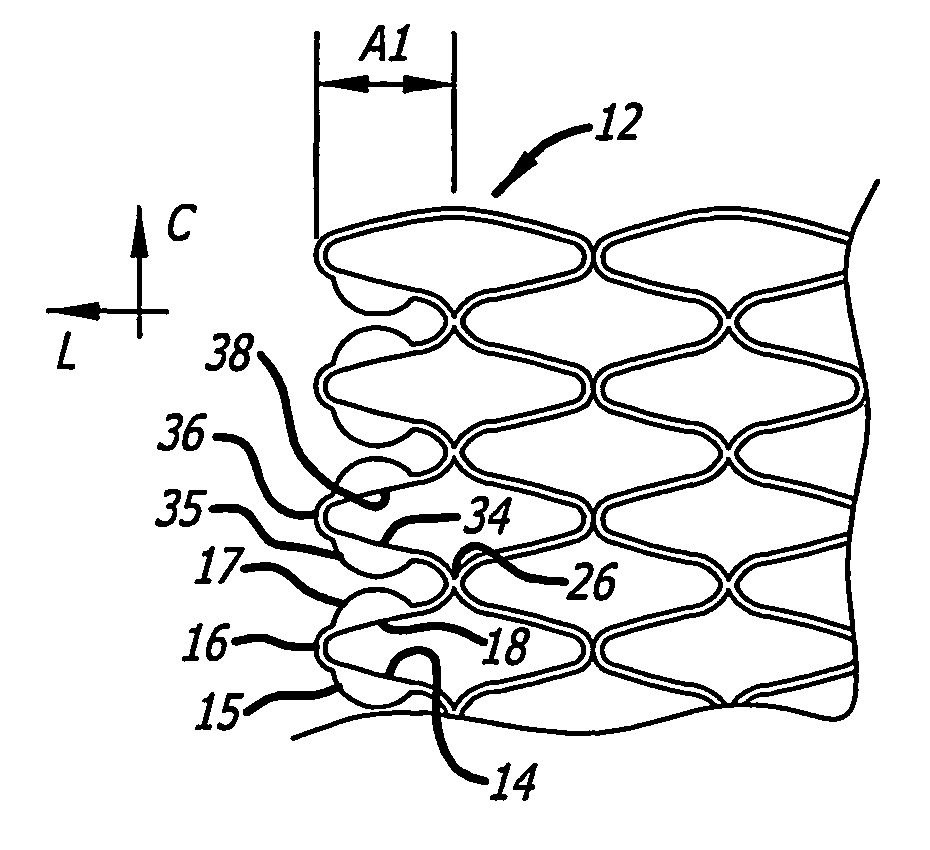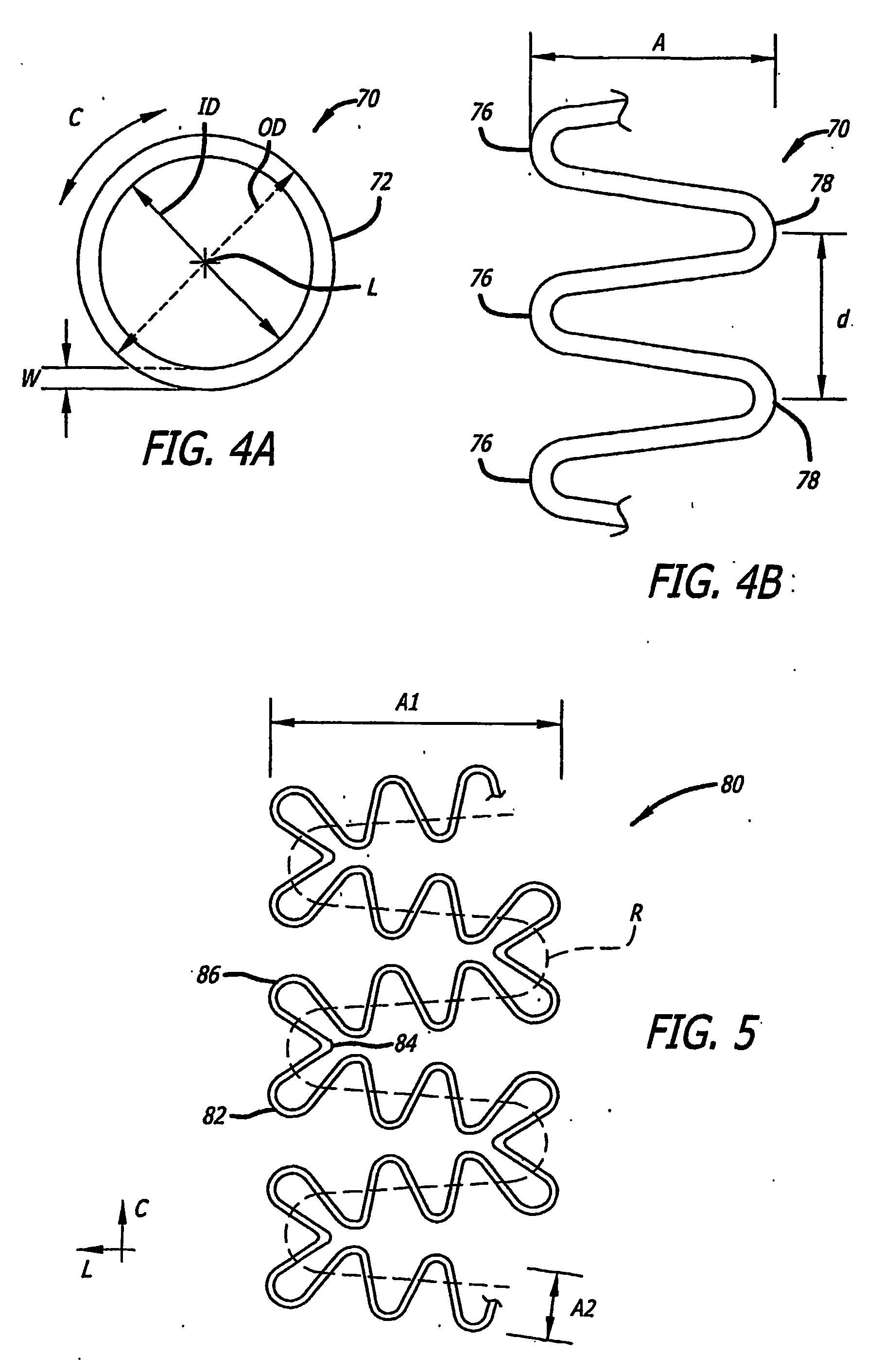Implantable stent with modified ends
a technology of endolumenal stents and implants, which is applied in the field of implantable endolumenal stents, can solve the problems of significant burden, proximal end trauma, and balloon end trauma to localized vessel wall trauma, so as to enhance long-term patency, improve tissue-device interactions, and improve long-term patency
- Summary
- Abstract
- Description
- Claims
- Application Information
AI Technical Summary
Benefits of technology
Problems solved by technology
Method used
Image
Examples
Embodiment Construction
[0121] Referring more specifically to the drawings, for illustrative purposes the present invention is embodied in the apparatus generally shown in FIG. 1A through FIG. 38. In general, it is to be appreciated that the various embodiments provide enhancements for improved outcomes for drug eluting stents, wherein a stent scaffolding is adapted to carry and elute bioactive agents. Such may be provided for example in or as a coating along surfaces of the stent scaffolding, or in wells or cavities formed along the stent scaffolding, that hold and elute the drugs. These various enhancements are not intended to be limited to a particular modality of such drug carrying mode, and other modes than those specifically described are contemplated as would be apparent to one of ordinary skill based upon review of this disclosure in view of other available information related to drug eluting stents. It is further appreciated that, despite the various benefits afforded by the present enhancements t...
PUM
 Login to View More
Login to View More Abstract
Description
Claims
Application Information
 Login to View More
Login to View More - R&D
- Intellectual Property
- Life Sciences
- Materials
- Tech Scout
- Unparalleled Data Quality
- Higher Quality Content
- 60% Fewer Hallucinations
Browse by: Latest US Patents, China's latest patents, Technical Efficacy Thesaurus, Application Domain, Technology Topic, Popular Technical Reports.
© 2025 PatSnap. All rights reserved.Legal|Privacy policy|Modern Slavery Act Transparency Statement|Sitemap|About US| Contact US: help@patsnap.com



